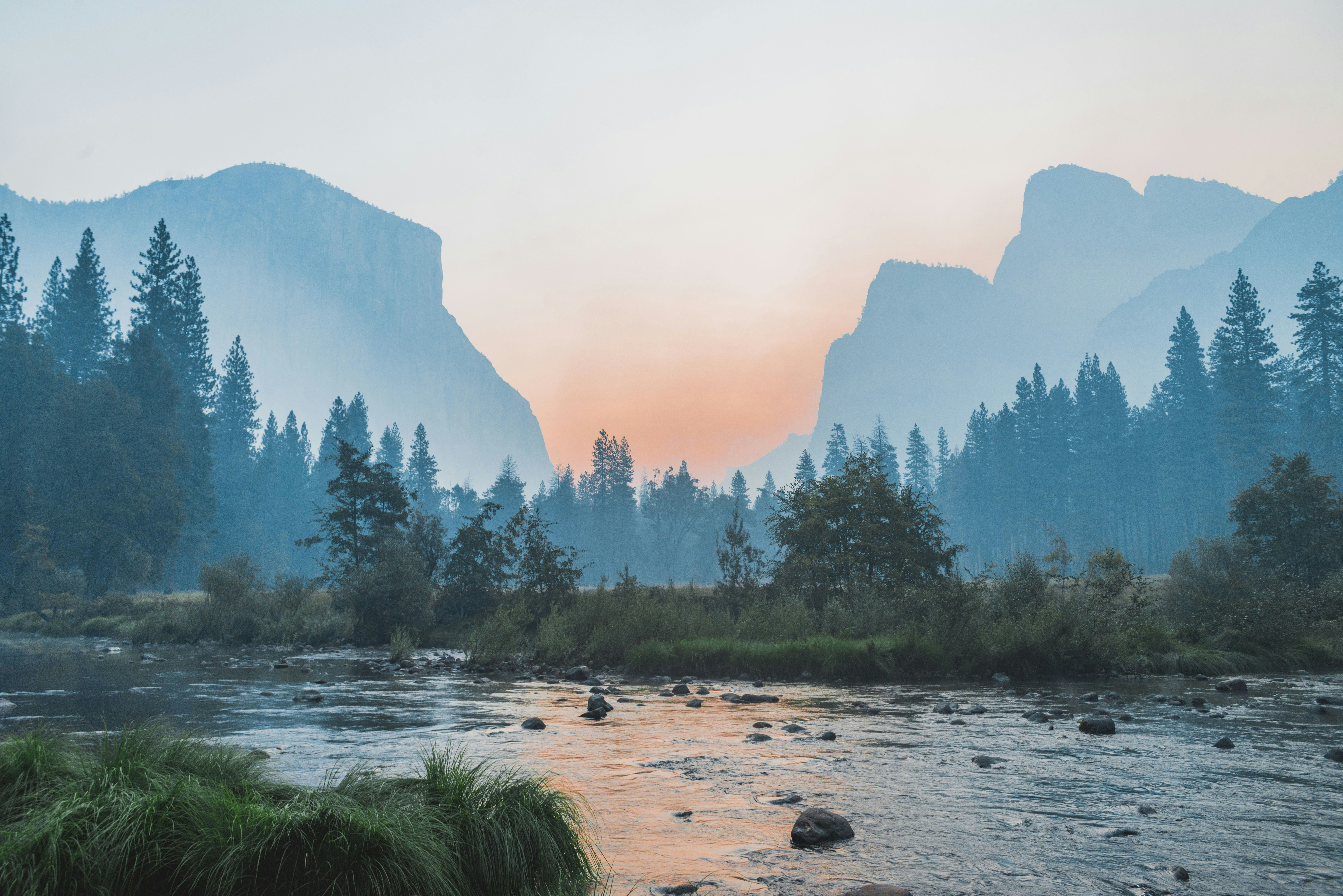When you use Great Photo Recipes links to buy products, the site may earn a commission.
What's The Recipe For This Great Photo?

Title: How to photograph I was freezing cold staying in the tent cabins in Half Dome (formerly Curry) Village in Yosemite Valley with my dad who was there for work, so I got up and drove around the valley at 6 am. There’s been lots of fires in the area and the valley was filled with this thick smoke. Stopped at a turnout near Tunnel View and shot this photo - I really love the symmetry of it and the smooth gradients the smoke produces.; body of water surrounded by trees
Credits: Bailey Zindel, source, license.
foreground, midground, and background elements for depth. Adjust settings for sharpness and depth of field.
• aperture: 11.0 • exposure time: 1/60 • focal length: 28.0 • ISO: 800
High-end camera gear can be beneficial, but it's not essential. You can use equipment similar to
Nikon D800, that was used for the original photo. Or use any compatible camera.
From RAW to JPEG
Post-processing is indispensable for transforming raw pixels into
captivating, impactful photographs, enriching their storytelling and aesthetic allure.
Tools like
darktable (open-source) or
Lightroom
(commercial)
facilitate adjustments in
brightness,
contrast, and
color,
which
enhances visual appeal, corrects imperfections, and enables creative expression while optimizing photos for various outputs such as prints or social media.
Post-processing isn't a dark art for pro artists or geeks; it's a vital requirement for every image, regardless of its subject or content.